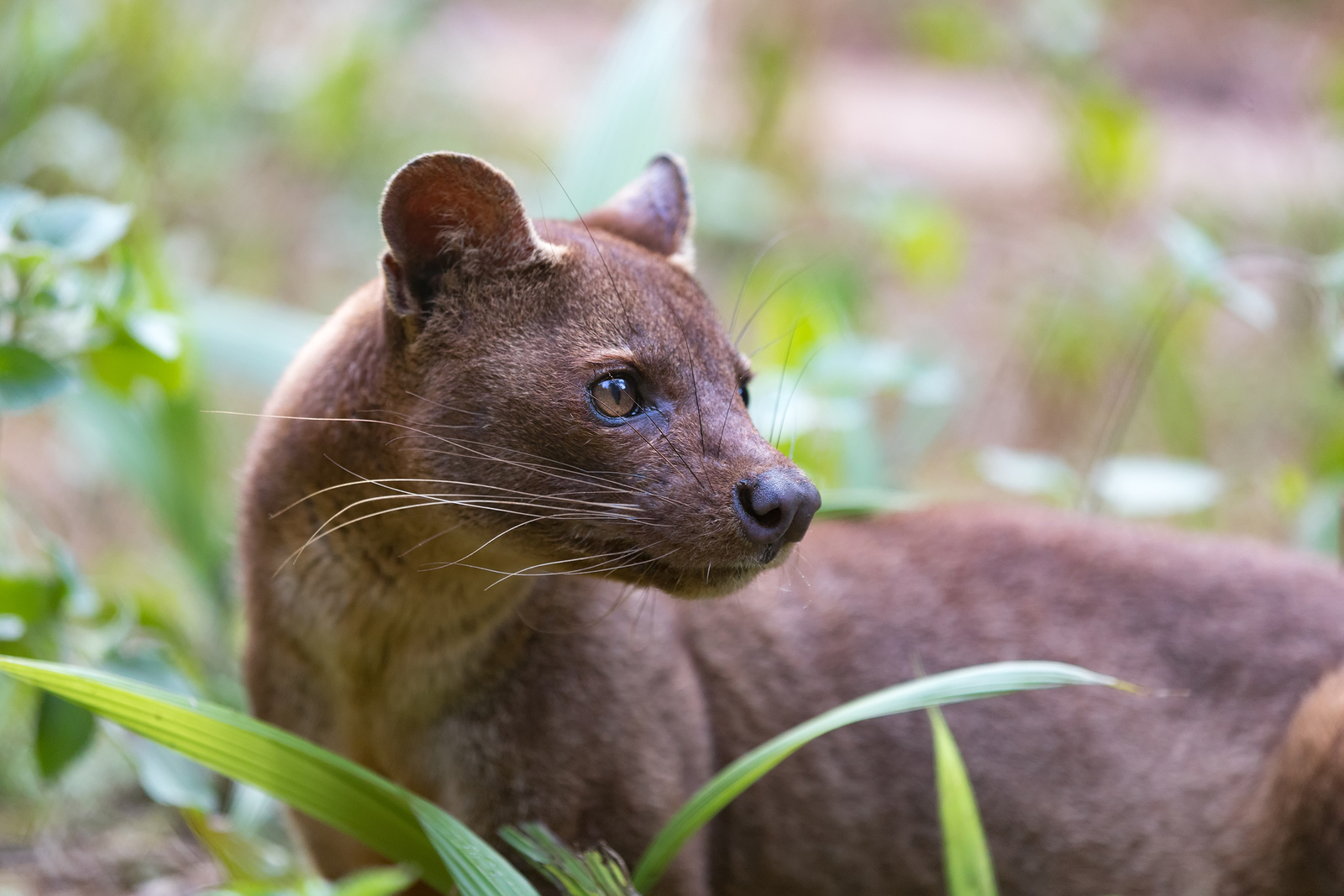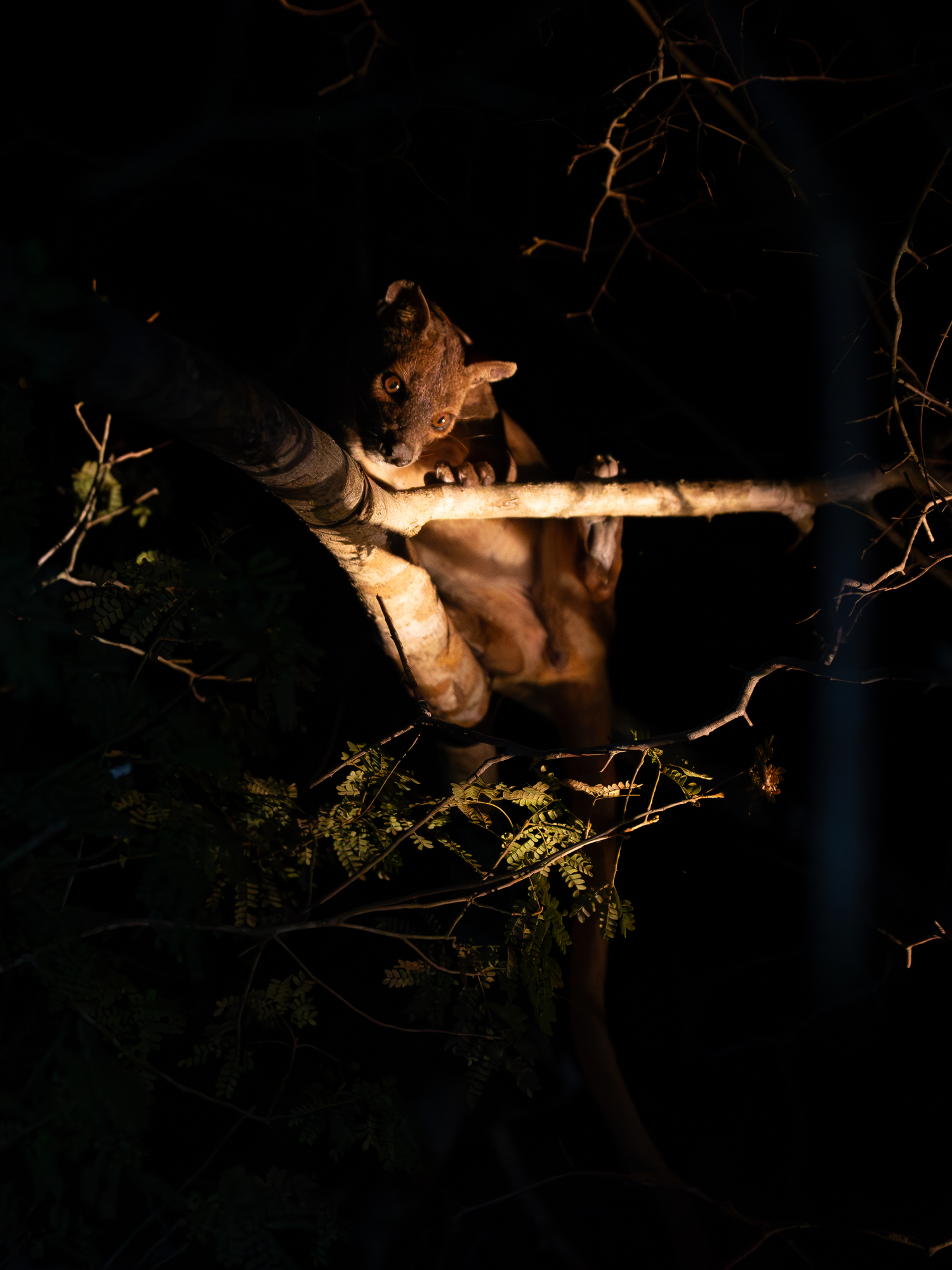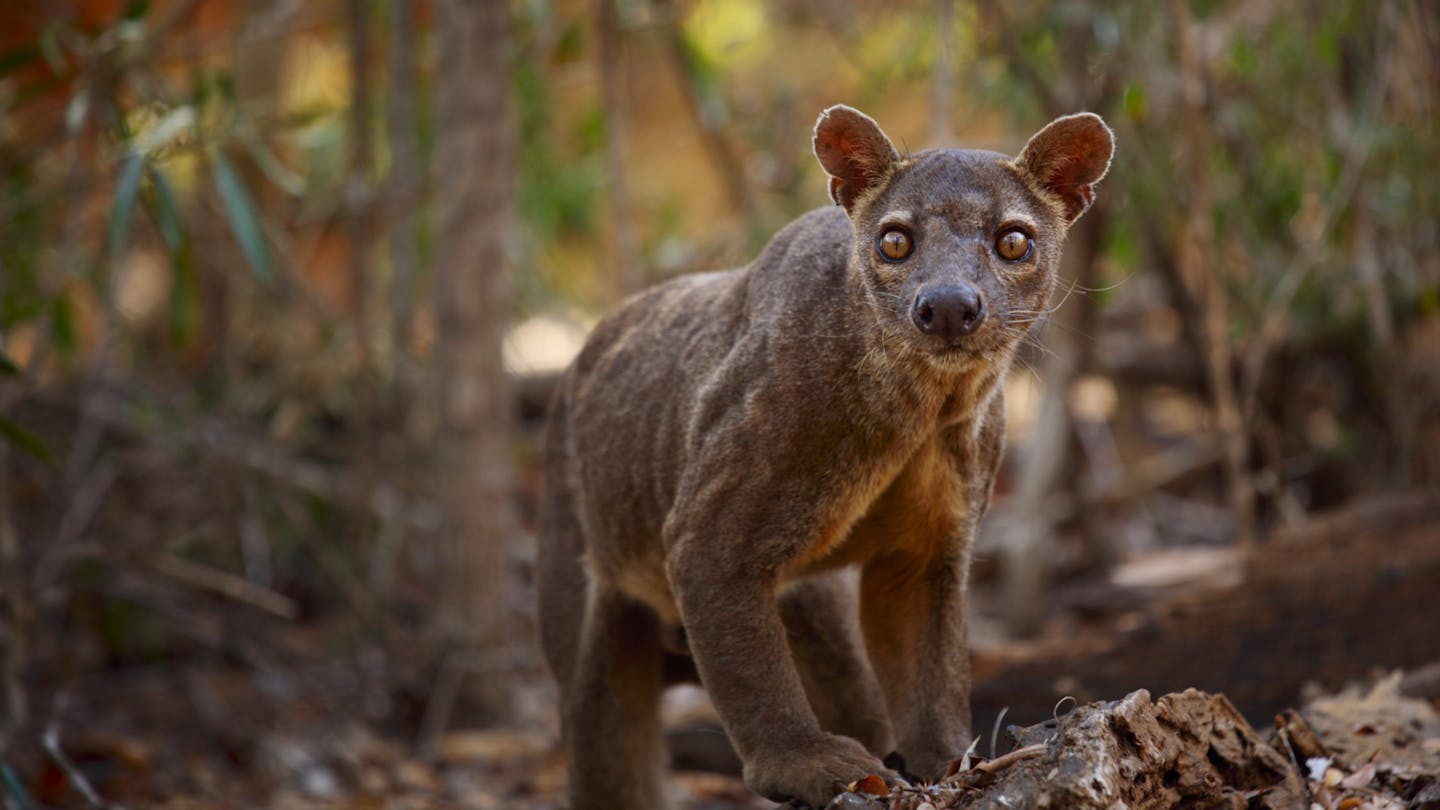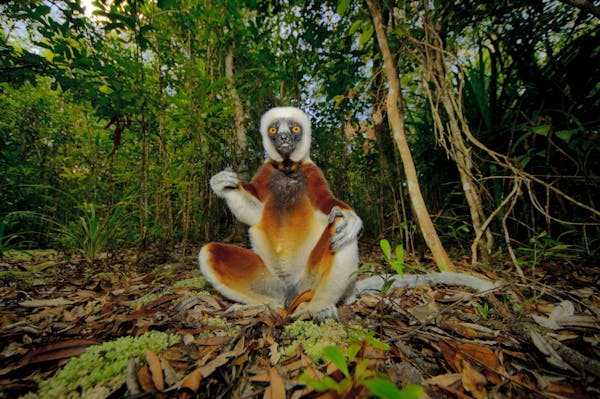The fossa: Madagascar's elusive apex predator
- Nature Conservation
- Land Conservation
- Iconic Species
- Wildlife
- Mammals
- Madagascar & East African Coast
- Afrotropics Realm
One Earth’s “Species of the Week” series highlights an iconic species that represents the unique biogeography of each of the 185 bioregions of the Earth.
Hidden within the dense forests of Madagascar, the fossa (Cryptoprocta ferox) moves with stealth and agility. As the island’s largest carnivore, this elusive predator roams the treetops and forest floor, dominating an ecosystem filled with unique wildlife. Often mistaken for a large cat, the fossa’s true nature is far more complex, blending characteristics of felines and mongooses into a uniquely adapted hunter.

Fossas are the iconic species of the Madagascar bioregion (AT6), located in the Madagascar & Eastern Afrotropics subrealm.
Physical characteristics and adaptations
Sleek and muscular, the fossa has a body length of 70–80 centimeters (28–31 in) with an equally long tail that aids in balance while navigating tree canopies. Males tend to be larger than females, weighing between 5.5 and 8.6 kilograms (12–19 lbs).
Its semi-retractable claws and highly flexible ankles allow it to climb trees headfirst and leap with precision. Its short, reddish-brown coat provides excellent camouflage in the dappled light of Madagascar’s forests.
A carnivore’s diet and hunting strategy
Lemurs make up more than half of the fossa’s diet, making it the only predator capable of hunting all lemur species, even the largest ones. It also preys on rodents, reptiles, birds, and insects. The fossa’s ability to hunt both on the ground and in the trees sets it apart from other carnivores. Occasionally, fossas have been known to hunt in pairs or small groups, a rare behavior among solitary predators.
The fossa’s crucial role in Madagascar’s ecosystem
As the top predator in Madagascar, the fossa helps regulate lemur populations and maintain balance within its ecosystem. Without it, prey species could overpopulate, leading to significant changes in forest dynamics. This apex predator’s presence is vital for sustaining healthy biodiversity on the island.

Closeup of a fossa at the Vakona Reserve in Perinet, Madagascar. Image Credit: Artushfoto | Dreamstime.com.
Solitary yet complex social behavior
Fossas are primarily solitary, though they communicate through vocalizations, scent markings, and body language. They have large territories, with males roaming over vast areas that overlap with multiple females.
Mating season sees a dramatic shift in behavior as multiple males compete for a single female’s attention. Unlike most carnivores, females remain in one location, allowing several males to compete over an extended period.
Reproduction and the next generation
Mating takes place high in the trees, a unique behavior among carnivores. After a gestation period of around 90 days, a female gives birth to one to six blind, toothless pups. These young fossas remain dependent on their mother for several months before reaching independence. They take up to four years to fully mature, a slow development process that makes the species particularly vulnerable to population declines.
In Malagasy culture and tradition
The fossa holds a complex place in Malagasy culture. Some communities regard it with fear, believing it steals livestock or even children, leading to retaliatory killings. However, in certain regions, traditional fady (taboos) prevent harming the animal, offering it some cultural protection.

A fossa at night in the jungles of Madagascar. Image Credit: Vaclav Sebek | Dreamstime.com.
The threats facing Madagascar’s apex predator
Habitat destruction poses the greatest threat to the fossa. Deforestation for agriculture, logging, and human settlement continues to shrink its habitat. With the loss of forests, prey populations decline, forcing fossas to venture into human areas where they are often hunted as pests. Additionally, introduced species like feral dogs and cats spread diseases that impact fossa populations.
Conservation efforts and the future of the Fossa
Listed as vulnerable by the IUCN, the fossa’s survival depends on conservation efforts aimed at protecting Madagascar’s forests. National parks and reserves offer some refuge, but habitat fragmentation remains a challenge.
Conservation groups are working to raise awareness and promote sustainable land-use practices that balance human needs with wildlife protection. Captive breeding programs have also contributed valuable insights into the species’ biology and reproduction.
Protecting Madagascar’s top predator
The fossa is a symbol of Madagascar’s incredible biodiversity. As an apex predator, its survival is essential for maintaining ecological balance. Protecting the fossa means preserving Madagascar’s forests, safeguarding countless species that call them home. Through conservation initiatives and greater awareness, we can ensure this enigmatic hunter continues to thrive in its island sanctuary.
Support Nature Conservation


.jpg?auto=compress%2Cformat&h=600&w=600)
